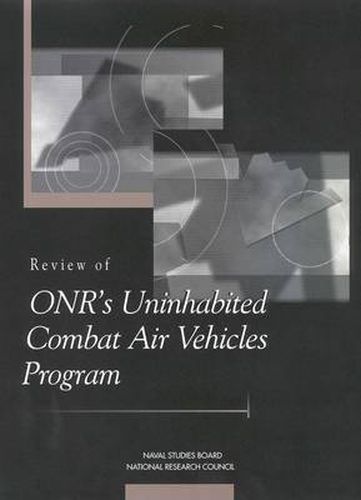Readings Newsletter
Become a Readings Member to make your shopping experience even easier.
Sign in or sign up for free!
You’re not far away from qualifying for FREE standard shipping within Australia
You’ve qualified for FREE standard shipping within Australia
The cart is loading…






Joint Vision 20101 addresses the need for achieving military dominance through the application of new operational concepts. For the Department of the Navy, future operational concepts will hinge on a continuance of forward yet unobtrusive presence and the capability to influence events ashore as required. This capability will be enabled by the development and insertion into the forces of new technologies for providing command, control, and surveillance; battlespace dominance; power projection; and force sustainment. For example, unmanned aerial vehicles (UAVs) have recently proven to be valuable operational platforms for providing tactical intelligence by surveillance of the battlefield. To support naval force objectives, the Office of Naval Research (ONR) has established a research program within the Strike Technology Division (Code 351) of the Naval Expeditionary Warfare Science and Technology Department aimed at expanding the operational capabilities of UAVs to include not only surveillance and reconnaissance, but strike and logistics missions as well. This new class of autonomous vehicles, known as uninhabited combat air vehicles (UCAVs), is foreseen as being intelligent, recoverable, and highly maneuverable in support of future naval operations.
Review of ONR’S Uninhabited Combat Air Vehicles Program evaluates ONR’s UCAV technology activities, including its vision documents and its science and technology roadmap (in areas of vehicle dynamics, communications, sensors, and autonomous agents) against criteria that would be selected by the committee, such as the relevance for meeting future naval priorities, the cost and time scale for its utilization, duplication of effort, and scientific and technical quality.
$9.00 standard shipping within Australia
FREE standard shipping within Australia for orders over $100.00
Express & International shipping calculated at checkout
Joint Vision 20101 addresses the need for achieving military dominance through the application of new operational concepts. For the Department of the Navy, future operational concepts will hinge on a continuance of forward yet unobtrusive presence and the capability to influence events ashore as required. This capability will be enabled by the development and insertion into the forces of new technologies for providing command, control, and surveillance; battlespace dominance; power projection; and force sustainment. For example, unmanned aerial vehicles (UAVs) have recently proven to be valuable operational platforms for providing tactical intelligence by surveillance of the battlefield. To support naval force objectives, the Office of Naval Research (ONR) has established a research program within the Strike Technology Division (Code 351) of the Naval Expeditionary Warfare Science and Technology Department aimed at expanding the operational capabilities of UAVs to include not only surveillance and reconnaissance, but strike and logistics missions as well. This new class of autonomous vehicles, known as uninhabited combat air vehicles (UCAVs), is foreseen as being intelligent, recoverable, and highly maneuverable in support of future naval operations.
Review of ONR’S Uninhabited Combat Air Vehicles Program evaluates ONR’s UCAV technology activities, including its vision documents and its science and technology roadmap (in areas of vehicle dynamics, communications, sensors, and autonomous agents) against criteria that would be selected by the committee, such as the relevance for meeting future naval priorities, the cost and time scale for its utilization, duplication of effort, and scientific and technical quality.